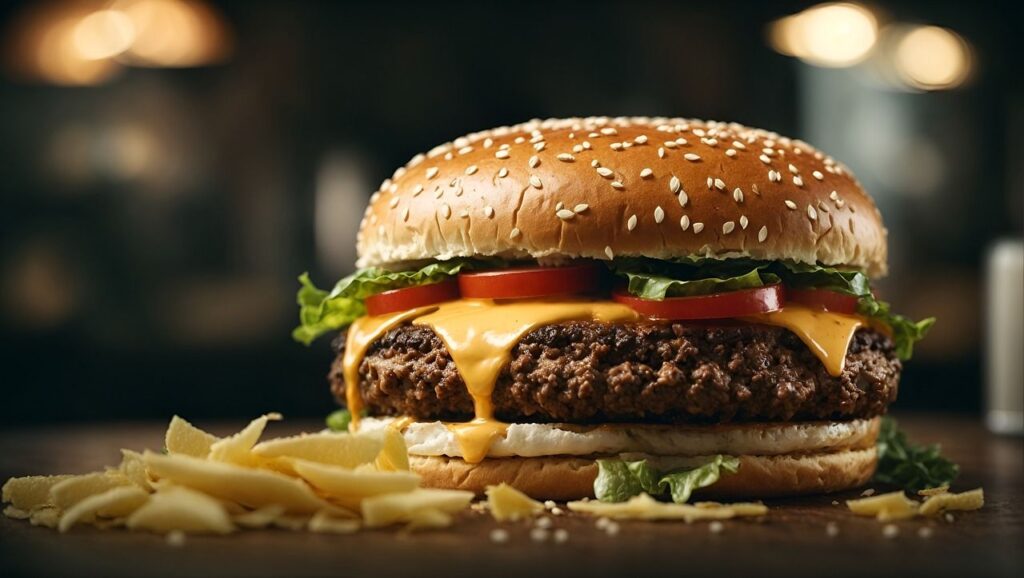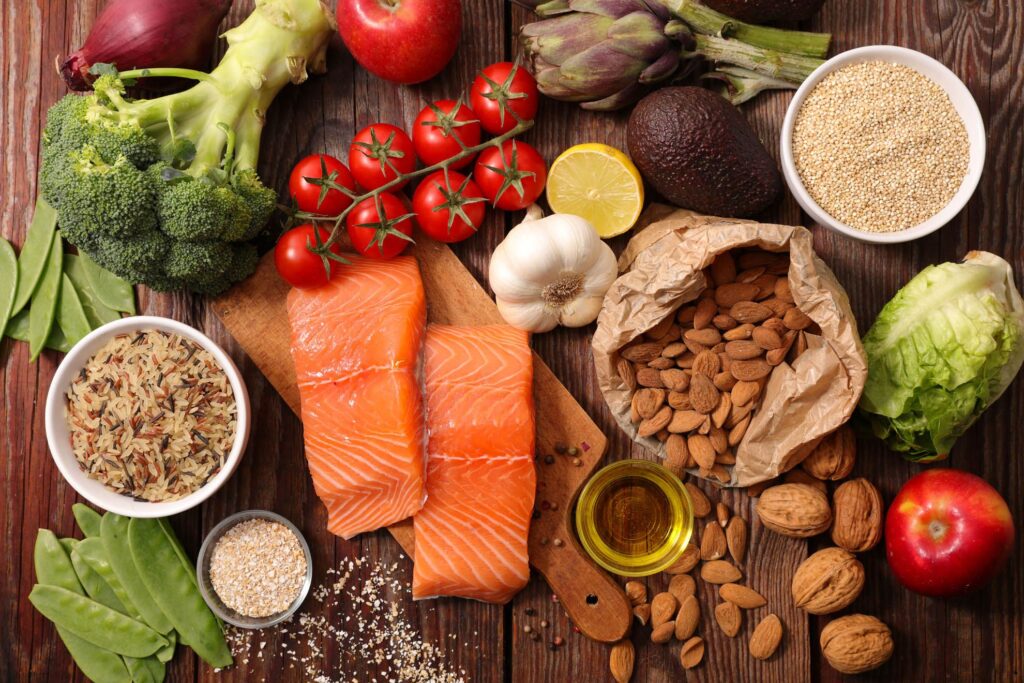
The way consumers approach dining is markedly changing. By 2025, the demand for more healthful food isn’t just a fleeting trend; it’s a deeply ingrained expectation. Shoppers are increasingly seeking functional foods, prioritizing plant-based meals, protein-rich snacks, and less processed options. This reflects a broad desire for nutrition that genuinely supports well-being, moving away from purely convenient but often nutritionally sparse choices.
Regrettably, a significant segment of the fast-food industry has been slow to adapt. Many established chains, known for their speed, still prioritize quickness over nutritional quality. During challenging periods like the COVID-19 pandemic, some even scaled back their already limited wholesome offerings, simplifying menus to predominantly unhealthy selections. These choices, when consumed regularly, pose considerable health risks, as experts frequently warn.
Amy Goodson MS, RD, LD, CSSD, highlights the issue: “Fast food is often high in saturated fat, sodium, and added sugars, which, when consumed regularly long-term, can contribute to weight gain, high blood pressure, and increased risk of chronic diseases like heart disease and type 2 diabetes.” These meals also often lack essential fiber, vitamins, and lean protein, making them imbalanced and less satisfying. While mindful eating is possible, some chains make finding a truly nutritious meal exceptionally difficult. This article spotlights 15 major fast-food players who, through their consistent menu strategies, largely disregard the growing consumer demand for healthier eating.

1. **McDonald’s: The Golden Arches of Caloric Excess**The iconic Golden Arches, a global symbol of convenience, has long struggled with its health reputation. This perception, fueled by historical “supersize me” options and ingredient concerns, deepened when the chain discontinued diet-friendly items like salads and grilled chicken in 2020. It’s no wonder McDonald’s often appears on dietitians’ lists of restaurants to approach with caution.
Alexandria Hardy RDN LDN, owner of Pennsylvania Nutrition Services, advises “caution with McDonald’s, as their primary menu offerings are high in calories, heavily processed, and lack fresh ingredients or customization.” This steers consumers toward calorie-dense choices. For instance, the Double Quarter Pounder with Cheese packs 740 total calories, 42 grams of fat, and 43 grams of carbohydrates.
Even desserts offer little relief. A regular M&M McFlurry contains 570 calories and a staggering 74 grams of sugar. The Big Breakfast with Hotcakes is the highest at 1,340 calories, significantly contributing to daily intake. Hardy also highlights chicken nuggets, consistently scrutinized for their composition.
Hardy explains the core issue: “McDonald’s often relies on highly processed ingredients (ex: McNuggets, which are made from a mixture of mechanically separated chicken, fillers, and artificial additives, then breaded and deep-fried) that contain excessive sodium and unhealthy fats.” Frequent consumption negatively impacts cardiovascular health. Items like the Big Mac (563 calories) or a large chocolate shake (exceeding daily sugar recommendations) underscore the challenge of finding balanced options here.
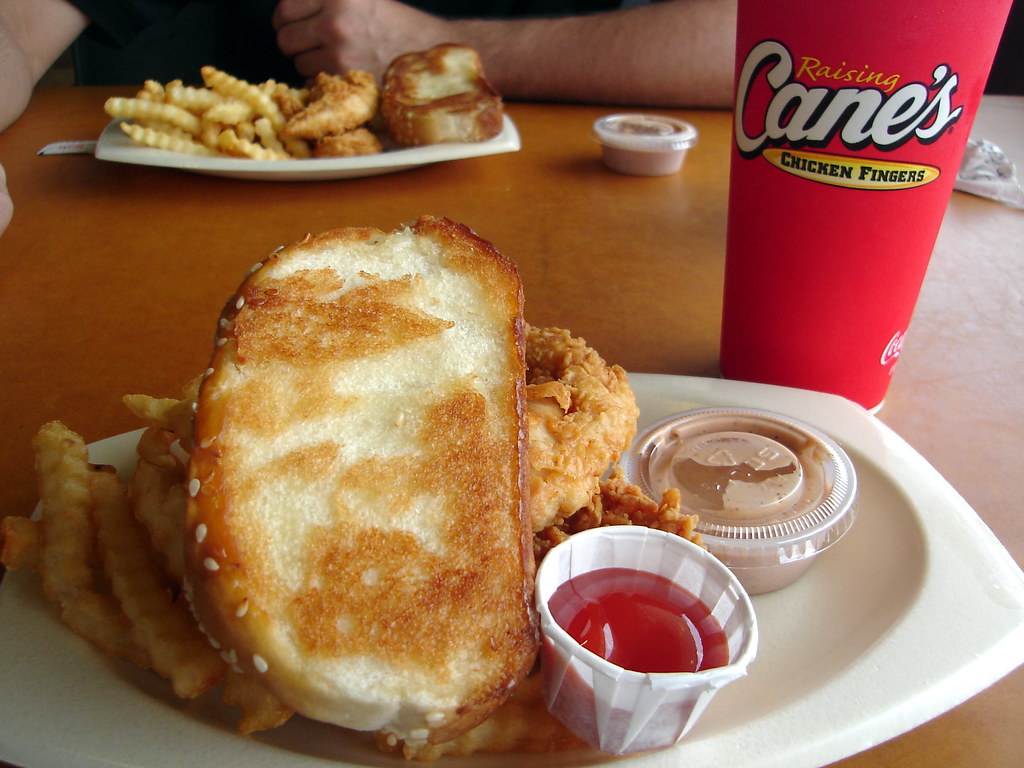
2. **Raising Cane’s: A Limited Menu with Limited Healthy Choices**Raising Cane’s is explicitly cited by Jordan Hill, MCD, RD, CSSD, for its stark absence of healthy menu options. Hill points out the core issue: the primary protein, chicken, is exclusively fried, severely limiting healthier preparations. Furthermore, she notes a critical dietary gap, stating “aren’t any fruit or vegetable options to speak of,” a major concern for balanced eating.g.
This limited, fried-heavy menu makes achieving a nutritious outcome difficult. Hill emphasizes, “It would be difficult to eat at one of the chain’s locations and ‘get a balanced meal that provides adequate amounts of vitamins, minerals, and fiber.” Such a meal, she warns, “would also likely end up being a meal excessive in calories, high saturated fat and high sodium.”
Cane’s narrow menu largely revolves around chicken fingers, crinkle-cut fries, buttery Texas toast, and its popular Cane’s sauce. While carrots, green, and red cabbage appear in coleslaw, their nutritional benefits are largely diminished, “doused in a sweet, creamy dressing,” overshadowing their healthy potential.
Both chicken fingers and fries are cooked in an all-vegetable oil blend of soybean and canola oils. This boosts caloric and fat content significantly. Even The Three Finger Combo, the smallest meal, delivers a minimum of 1,050 calories, 59 grams of fat, 1,730 milligrams of sodium, and 83 grams of carbohydrates, easily exceeding daily recommendations.
3. **Five Guys: The Undisputed King of Unhealthy Burgers and Fries**Five Guys features prominently on dietitian Jordan Hill’s watchlist due to its pronounced lack of truly healthy options. This is backed by compelling data: Plushcare, in October 2024, determined that among 16 popular chains, Five Guys served the “absolute unhealthiest cheeseburger.”
Plushcare’s analysis, based on calories, sugar, saturated fat, and sodium, awarded the single cheeseburger from Five Guys the highest “unhealthiness score” of 50. This burger contains an astonishing 73% more saturated fat (26.5 grams) than any other fast-food cheeseburger analyzed. It also boasts 980 calories and 1,050 milligrams of sodium, *before* any toppings or patties.
Nutritional challenges extend beyond burgers. The chain’s signature fries also ranked highest. Despite being cooked in 100% peanut oil, a regular order contains a massive 953 calories, 41 grams of fat, and 962 milligrams of sodium, making even a side a significant caloric burden.
For dessert, Five Guys’ classic vanilla milkshake was ranked as the third unhealthiest out of 14 options. The cumulative effect of these high-calorie, high-fat, and high-sodium items reinforces Five Guys’ position where finding a healthy meal is exceptionally challenging.
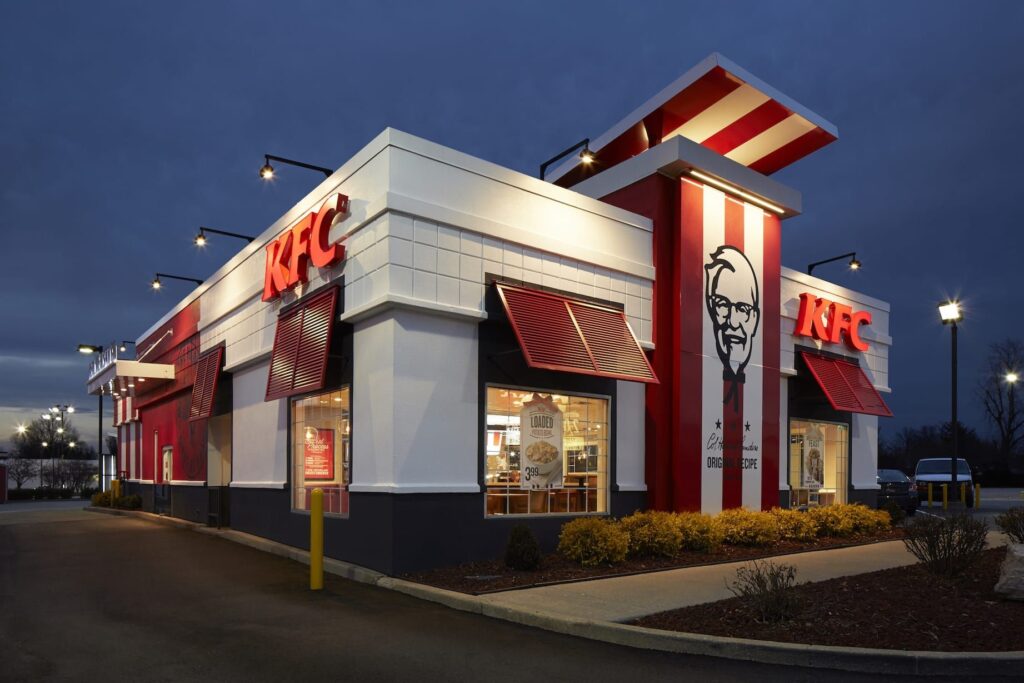
4. **KFC: A Delicious Legacy Built on Fat, Sodium, and Sugar**KFC’s mashed potatoes, biscuits, and fried chicken offer a delicious but nutritionally imbalanced meal. Lisa R. Young, PhD, RDN, identifies KFC as a chain warranting mindful consumption, citing concerns about its menu philosophy and ingredients. Its offerings often rely on “low-quality ingredients like processed meats, refined carbs, and artificial additives,” carrying elevated levels of saturated fat, sodium, and added sugar.
A significant issue is potential nutritional overload. Young notes that with KFC’s meals, “daily recommendations for these nutrients can be exceeded in a single sitting.” While KFC uses low-linolenic soybean oil for frying, problematic additions like MSG and “high-fructose corn syrup… elsewhere on the menu,” particularly in sandwich buns, persist. One fried chicken sandwich can reach 38 grams of fat and 1,500 milligrams of sodium.
Young also highlights “portion distortion,” explaining that “meals often tend to be oversized, leading people to eat excessive calories.” This is compounded by a lack of fiber and whole foods crucial for satiety. Vegetables are mainly starchy sides like mashed potatoes or coleslaw (170 calories, 12 grams sugar in a small serving). The only fruit is cherry pie poppers.
With a Famous Bowl containing 720 calories and 2,370mg of sodium, and an Extra Crispy chicken breast having 530 calories and 35 grams of fat, finding a healthy meal at KFC is challenging. This places it among chains that do not prioritize healthy options.
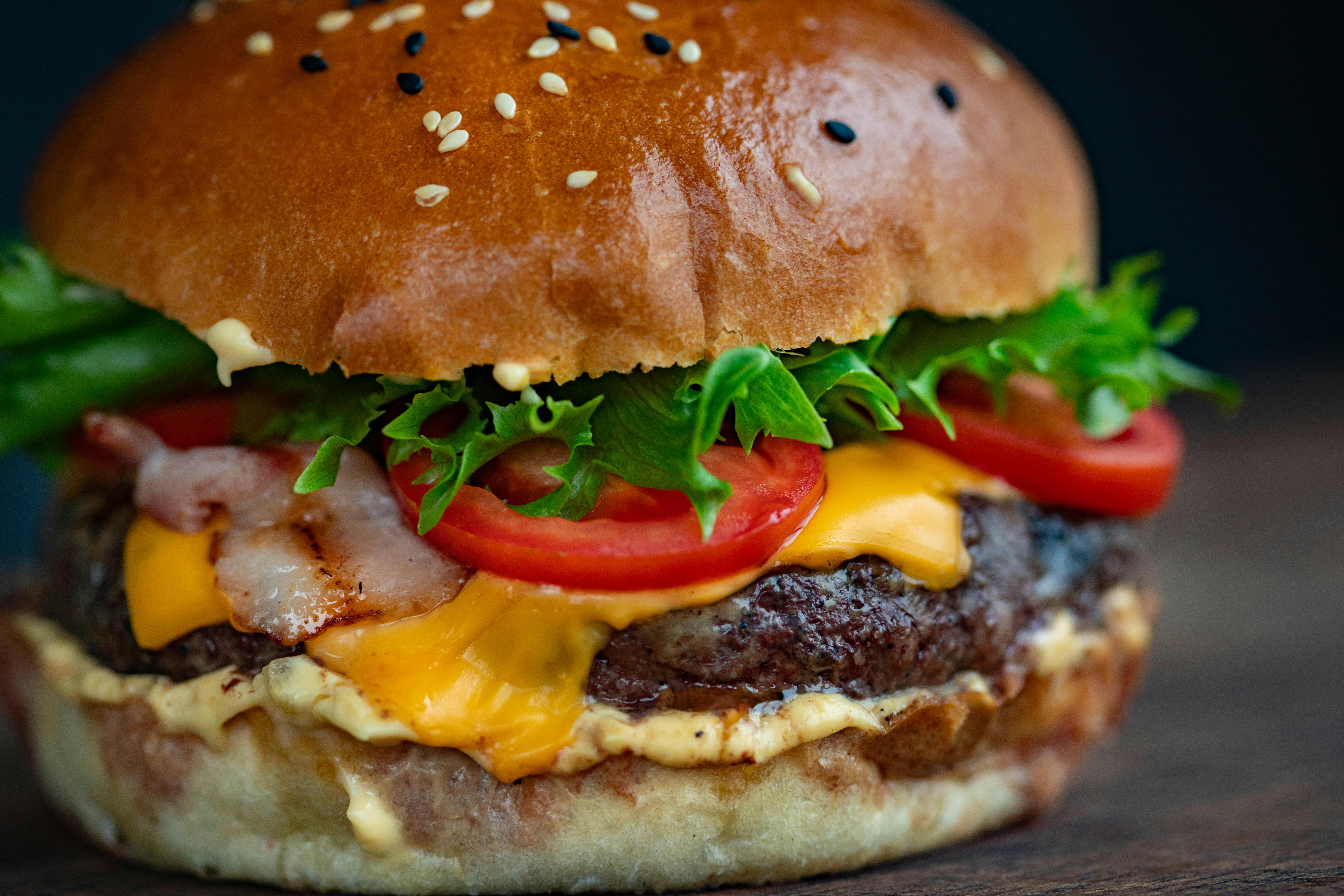
5. **Burger King: The Royal Realm of Scarce Healthy Options**Both Dr. Lisa R. Young and Jordan Hill, MCD, RD, CSSD, agree that Burger King’s establishments warrant consumer caution. Hill specifically highlights its “scarcity of healthy options,” a recurring problem also seen at Raising Cane’s and Five Guys. Mirroring McDonald’s, Burger King has, in recent years, removed lighter choices like salads and grilled chicken.
This strategic menu simplification results in offerings predominantly filled with fried chicken, fried fish, French fries, and fried onion rings. With few exceptions, “nearly everything on the menu is fried,” making healthy selections exceptionally difficult. This focus on fried items clearly indicates a menu philosophy prioritizing indulgence over nutrition.
As Young noted, such options are inherently “likely to contain processed ingredients and elevated amounts of fat, sodium, and sugar.” While Burger King has made efforts since 2020 to eliminate many artificial additives and claims 100% real beef, these improvements don’t negate its nutritional shortcomings.
Despite strides in ingredient purity, core offerings remain calorie-dense. A single Whopper with Cheese hits 770 calories, with 51 grams of fat (15g saturated, 1.3g trans), 1610 milligrams of sodium, and 58 grams of carbs. Crispy Chicken Sandwiches are similar. A Triple Whopper with Cheese escalates to 1,300 calories and 90 grams of fat (33g saturated, 2.5g trans), an exceedingly challenging choice for health goals.
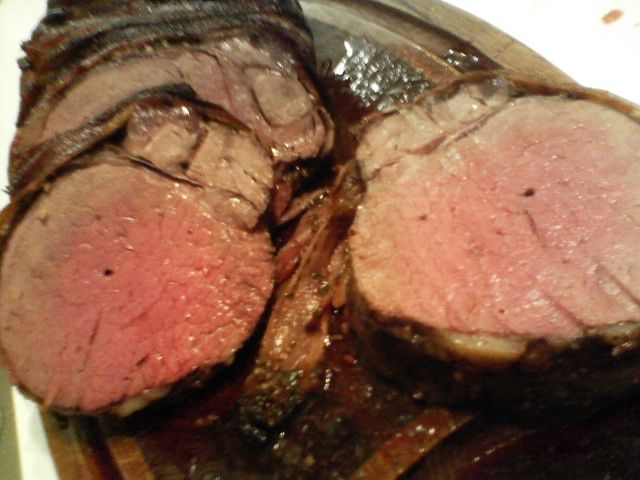
6. **Wendy’s: Fresh Beef, Frozen Health Concerns**Despite its “fresh, never frozen” beef marketing, Wendy’s surprisingly ranks as the least healthy fast-food chain in the U.S. This is largely due to meals that far exceed daily nutritional guidelines. The chain’s commitment to fresh ingredients, while positive, doesn’t automatically mean a healthy menu, especially considering portion sizes.
Wendy’s notorious Triple Baconator meal, paired with large fries and a medium Frosty, delivers a staggering nutritional hit: approximately 2,160 calories, 54 grams of saturated fat, and an alarming 3,400 milligrams of sodium. These figures drastically surpass daily dietary guidelines for most adults in one sitting, actively undermining health-conscious efforts. The Pretzel Bacon Pub Triple cheeseburger further crushes health scales at 1,520 calories and 106 grams of fat.
Individual meal components also contribute significantly. Baconator fries, for example, add 490 calories and 31 grams of fat. This layering of high-fat, high-calorie components makes it extremely difficult to construct a balanced meal.
Even seemingly healthier options can be deceptive. A full-sized Taco Salad with chili and chips contains a substantial 690 calories and a concerning 1,870 milligrams of sodium. This demonstrates that even a salad can be a significant source of calories and sodium, making true healthy eating challenging.
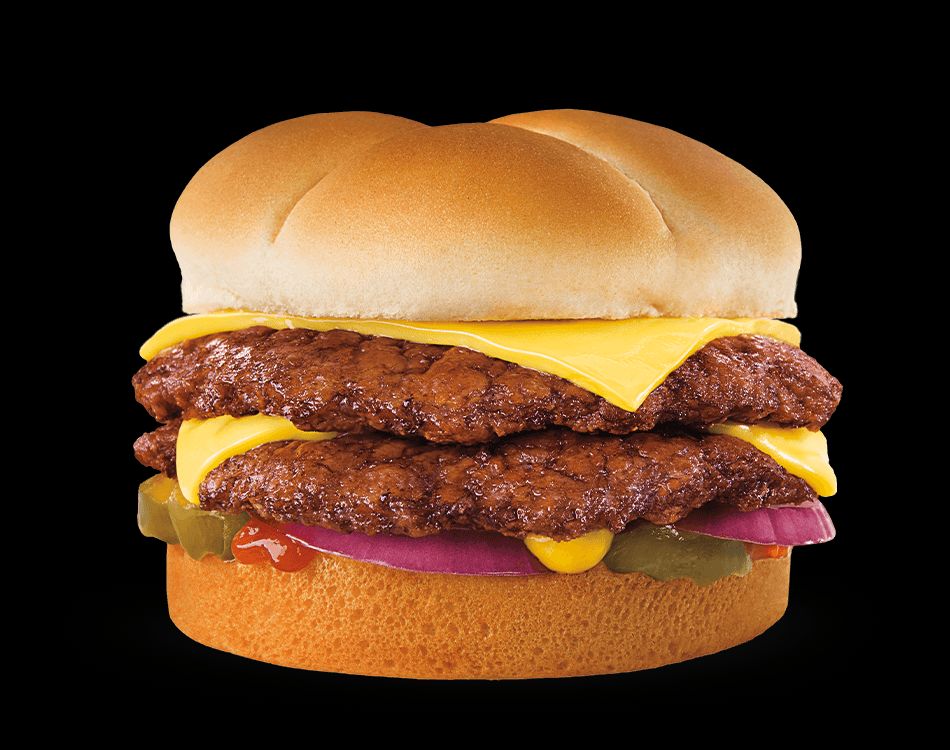
7. **Sonic Drive-In: A Retro Experience with Modern Calorie Bombs**Sonic Drive-In often conjures nostalgia, but behind the charm lies a menu packed with nutritional surprises, leading to “nutrition whiplash.” Sonic closely trails Wendy’s in unhealthiness rankings, largely due to its massive portion sizes, calorie-dense combo meals, and notoriously sugary beverages. The convenience masks the significant caloric and sugar content within many beloved offerings.
Consider the SuperSONIC Double Cheeseburger with mayo: this item alone hits 1,140 calories and a massive 74 grams of fat, before any sides. This illustrates how a main course can consume a huge portion of daily recommended intake, pushing additional items well beyond healthy limits. Typical combos can easily reach 1,600 calories and 3,000 mg sodium, making dietary balance an afterthought.
The famed drinks menu, a Sonic cornerstone, offers little for the health-conscious. A large Cherry Limeade, for instance, is a sugar bomb, containing 470 calories and an alarming 120 grams of sugar—equivalent to approximately 30 sugar cubes in one drink, far exceeding daily recommendations.
The ultimate indulgence is Sonic’s range of massive shakes. The 44 oz Reese’s Peanut Butter Cup Master Shake, for example, packs over 1,700 calories and nearly 50 teaspoons of sugar. This single drink can represent almost an entire day’s recommended caloric intake, clearly prioritizing extreme indulgence over nutritional moderation or healthy options.
Continuing the journey into the fast-food landscape, we delve into eight more prominent chains that, despite growing consumer demands for healthier fare, consistently present menus heavily skewed towards indulgence. These establishments often make it challenging, if not impossible, for patrons to make truly nutritious choices, contributing to broader public health concerns. From Mexican-inspired dishes loaded with sodium to dessert-centric spots packing extreme sugar, these chains underscore the industry’s ongoing struggle with nutritional reform.
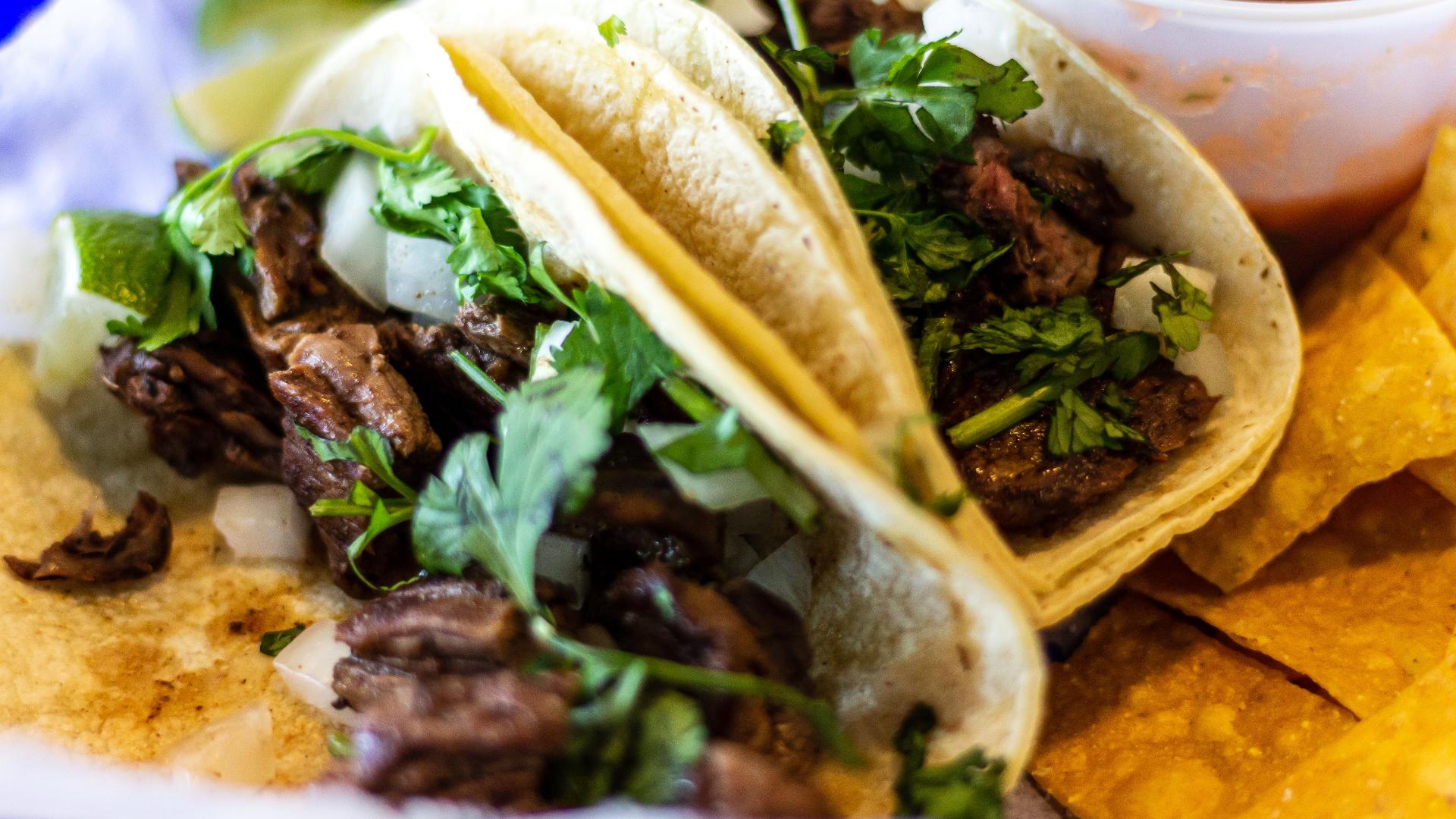
8. **Taco Bell: A Fiery Focus on Flavor Over Fitness**Taco Bell, despite its “think outside the bun” slogan, frequently finds itself in discussions about fast-food establishments that prioritize indulgence over nutrition. Ranked among the top five fast-food chains with the least healthy offerings by WorldAtlas, its menu often features calorie-dense burritos and other items that contribute significantly to excessive sodium and fat intake. The convenience of its Mexican-inspired fare often belies the considerable nutritional impact.
One prime example of this caloric density is the Nachos BellGrande, which alone “packs 740 calories and 38 grams of fat before you even get to your main meal.” This single item can consume a substantial portion of an individual’s daily caloric and fat allowance, making it challenging to maintain a balanced diet even before considering additional menu selections. The appeal of such a generously portioned and topping-laden dish is clear, yet its nutritional profile is equally striking.
Another popular choice, the Crunchwrap Supreme, while convenient for on-the-go consumption, still presents significant health considerations. This handheld meal registers “530 calories and 1,130mg of sodium,” a figure that causes one to pause and reflect on its regular consumption. For those monitoring their sodium intake, such a choice can quickly lead to exceeding daily recommendations, impacting cardiovascular health over time.
Perhaps most alarming is the Quesarito, an item where the sheer volume of sodium stands out. The context reveals that a Quesarito “contains more sodium than you should consume in an entire day.” This highlights a critical issue within Taco Bell’s menu: dishes that, in one serving, can fully or excessively meet daily limits for key nutrients, making it exceptionally difficult for consumers to adhere to health guidelines, even with mindful eating strategies.
Taco Bell, as part of YUM! Brands, has also demonstrated reactive menu changes, such as temporarily pulling onions from menus as a “precautionary measure” during an E.coli outbreak, rather than proactive steps towards broader nutritional improvements. While safety is paramount, this illustrates a pattern of responding to immediate crises rather than fundamentally re-evaluating core menu health.

9. **Dairy Queen: Deceptive Delights and Dessert Dangers**Dairy Queen, often associated with its iconic frozen treats, has expanded its menu to include a range of hot food items that also contribute to significant caloric and fat intake. While beloved for its Blizzards, the chain’s food offerings present substantial nutritional challenges, placing it among fast-food establishments often accused of neglecting healthy choices. The WorldAtlas report places Dairy Queen among the top five chains for unhealthiness.
The Flamethrower GrillBurger exemplifies this trend, containing a massive “1,030 calories and 71 grams of fat.” To put this into perspective, the context notes that this is “like eating four and a half Snickers bars,” a stark comparison that vividly illustrates the burger’s extreme caloric density. Such a meal makes it exceedingly difficult to stay within recommended daily nutritional limits, even as a standalone item.
However, Dairy Queen’s famous Blizzards arguably pose an even greater nutritional threat. A large Oreo Blizzard, a popular choice, is described as having “1,050 calories and 104 grams of sugar.” This staggering sugar content far exceeds daily recommendations, contributing significantly to concerns about weight gain and the risk of chronic diseases. These indulgent desserts are calorie bombs, even for occasional consumption.
Beyond individual items, Dairy Queen’s meal bundles amplify the problem. The “Six Pack Meal with two burgers, fries, onion rings, and drinks” is presented as a family-sized option, but the context reveals it “can feed a family – or deliver 2,250 calories to one very unhappy stomach.” This highlights the “portion distortion” issue, where oversized meals lead to excessive calorie consumption in a single sitting, making healthy eating a formidable task.
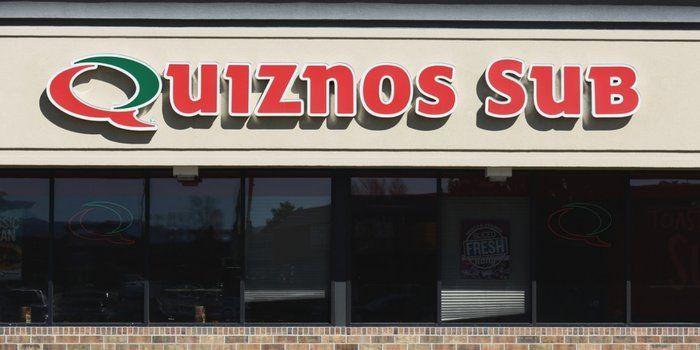
10. **Quiznos: Toasted Subs with Hidden Highs**Quiznos carved a niche with its toasted subs, offering a warm alternative to traditional cold sandwiches. However, this toasting process and the selection of ingredients often result in meals that are far from nutritionally balanced. The chain’s offerings can be particularly high in calories and sodium, making it a challenging choice for health-conscious consumers.
The WorldAtlas assessment specifically calls out Quiznos for its sub sandwiches, noting that they can pack “up to 1,300 calories and 2,850 mg sodium.” These figures represent a significant portion, if not exceeding, daily dietary guidelines for most adults in a single meal. The layering of meats, cheeses, and sauces, combined with the bread, quickly accumulates these high counts.
Furthermore, the nutritional impact of a Quiznos meal can escalate dramatically when sides are included. The context points out that these calorie and sodium figures can “often balloon to 2,500 calories with sides.” This tendency for accompaniments like chips or soups to push an already calorie-dense meal into extreme territory underscores the difficulty in making healthy choices at this chain. Consumers must be acutely aware of every component they add to their order.
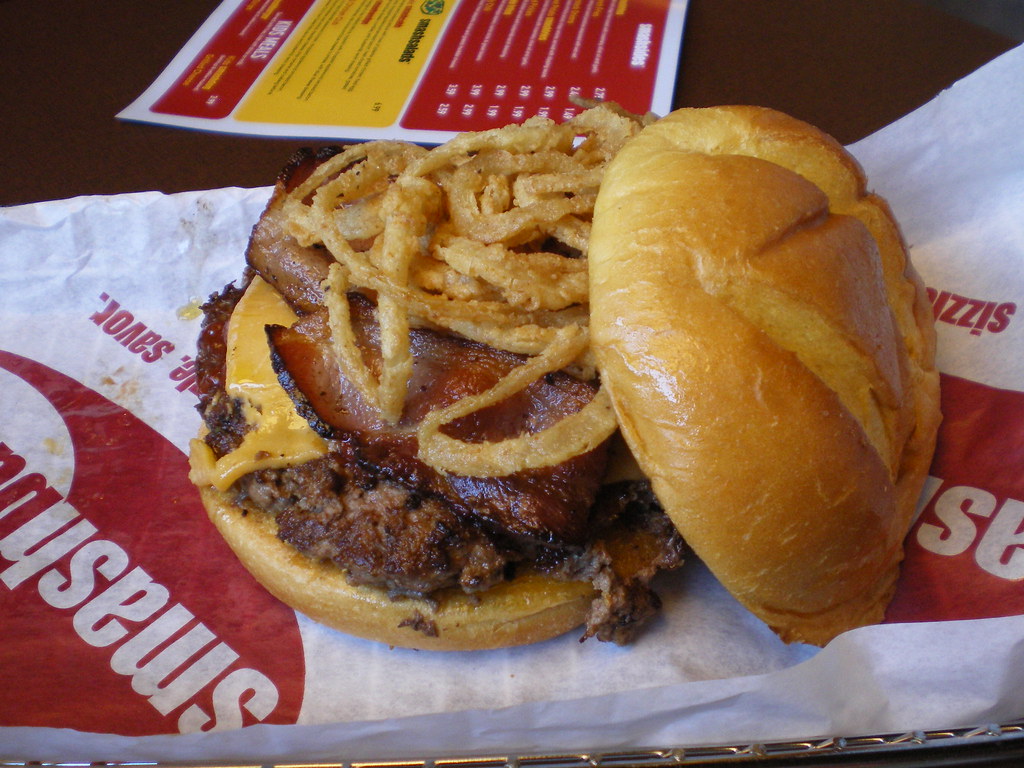
11. **Smashburger: Gourmet Claims, Caloric Realities**Smashburger positions itself as a more upscale, “gourmet” burger experience, distinct from traditional fast-food joints. Yet, beneath the veneer of fresh, customizable ingredients lies a menu that disguises indulgence with serious caloric implications. The chain’s offerings consistently push the boundaries of healthy eating, earning it a spot on lists of fast-food chains neglecting healthier options.
The WorldAtlas report on the unhealthiest fast-food offerings highlights Smashburger’s significant contribution to caloric excess. Their signature burgers, despite their gourmet presentation, are noted to “exceed 1,050 calories.” This places many of their main dishes well beyond what would be considered a reasonable calorie count for a single meal, especially when consumed as part of a regular diet.
Adding to this, Smashburger’s shakes are singled out for their substantial caloric impact, “adding a further 930 calories” to an already heavy meal. This combination of a high-calorie burger followed by a nearly equally high-calorie beverage creates a cumulative effect that can easily double or triple the average person’s recommended intake for a single sitting, prioritizing extreme indulgence over any semblance of nutritional moderation.
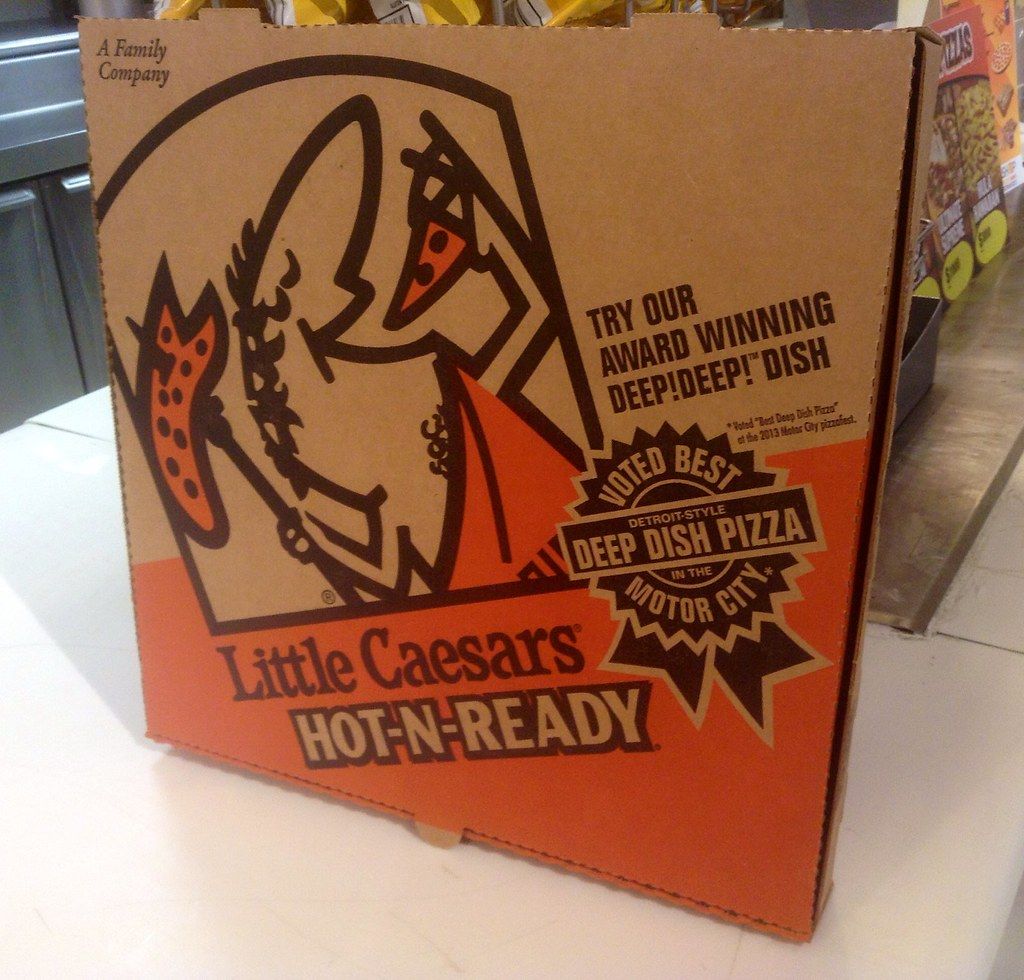
12. **Little Caesars: The Hot-N-Ready Health Compromise**Little Caesars has built its brand around convenience and affordability, particularly with its “Hot-N-Ready” pizza concept. While offering an attractive value proposition, this focus often comes at a steep nutritional cost, positioning the chain among those with significant unhealthy offerings. Its menu makes it challenging for consumers to find options that align with health-conscious dietary goals.
WorldAtlas specifically calls out Little Caesars for its flagship product, stating that the “$5 Hot‑N‑Ready” pepperoni pizza “packs a staggering 2,140 calories and 4,260 mg sodium into a single pepperoni pizza.” These figures are exceptionally high, representing well over an entire day’s recommended caloric intake and more than double the daily recommended sodium limit for most adults. Consuming such a pizza frequently could have profound negative health impacts.
The sheer volume of calories and sodium in a single pizza underscores the challenge posed by Little Caesars. The convenient, ready-to-eat nature encourages consumption, but the nutritional density means that even sharing a single pizza among several people can still lead to a high intake of unhealthy fats and salts per person. This makes mindful portion control essential but often difficult with such an accessible product.
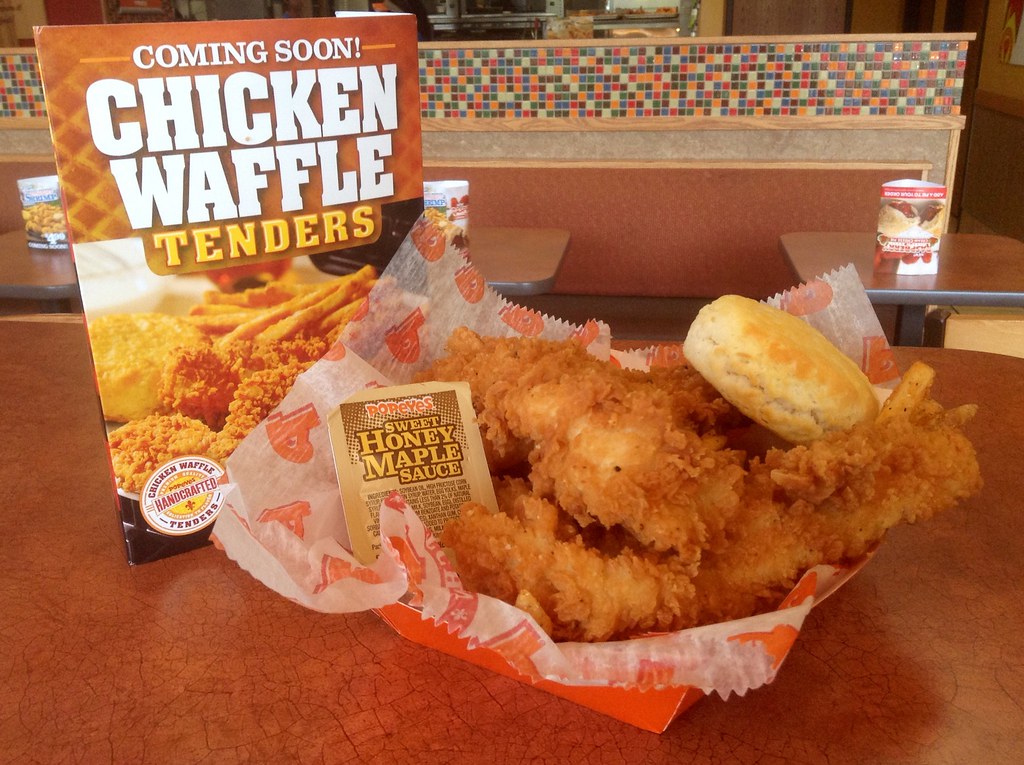
13. **Popeyes: Spicy Flavors, Serious Health Hazards**Popeyes Louisiana Kitchen is celebrated for its distinctive spicy, Cajun-inspired flavors, particularly its fried chicken and chicken sandwiches. While undeniably delicious for many, the chain’s menu leans heavily on deep-frying and rich ingredients, making it a significant source of high-calorie, high-fat, and high-sodium options that pose health hazards when consumed regularly.
The chicken sandwich, which famously sparked national frenzies, is a prime example of Popeyes’ approach to indulgence. The Daily Meal report notes that it clocks in at “699 calories and 42 grams of fat,” suggesting that “the excitement might not be worth the nutritional cost.” This single item, while popular, represents a considerable portion of an individual’s daily fat and calorie limits, underscoring the challenge of finding lighter options.
Even seemingly innocuous sides can contribute significantly to the overall unhealthy profile. The “Red beans and rice sounds healthy until you realize it contains 230 calories and 14 grams of fat in just one small serving.” This highlights how traditional comfort foods, even in small portions, can add substantial fat. Furthermore, a “large side of cajun fries adds 800 calories and 41 grams of fat to your meal,” turning a side into a main caloric event.
Popeyes’ consistent reliance on fried preparations and rich, flavorful but calorie-dense sides reinforces its position as a chain where navigating for healthy choices is difficult. The deliciousness of its offerings often overshadows the nutritional realities, requiring consumers to exercise extreme caution if aiming for balanced eating.
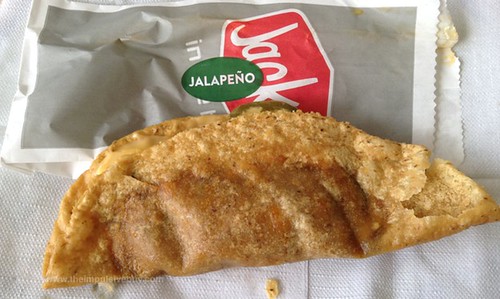
14. **Jack in the Box: Nutritional Nightmares Behind a Friendly Face**Jack in the Box, with its recognizable smiling clown logo, presents a wide-ranging menu that, unfortunately, includes numerous items characterized by alarmingly high calorie, fat, and sodium content. The chain’s diverse offerings, from burgers to burritos and various sides, frequently cross into the realm of “nutritional nightmares,” as highlighted by various health analyses.
One of the most striking examples is their Bacon Ultimate Cheeseburger, which “delivers 930 calories, 65 grams of fat, and a shocking 1,590mg of sodium.” The context emphasizes that this sodium level is “more than half your daily limit,” illustrating how a single burger can derail an entire day’s healthy eating efforts. Such an item encapsulates the chain’s tendency to create excessively dense meals.
Breakfast options at Jack in the Box are equally challenging from a nutritional standpoint. The Grande Sausage Breakfast Burrito, for instance, is noted to contain “1,050 calories and 72 grams of fat.” Starting the day with such a high-calorie, high-fat meal can set a difficult precedent for the rest of the day, making it harder to stay within dietary recommendations and contributing to long-term health risks.
Even side orders at Jack in the Box can be significant caloric contributors. A “single order of bacon cheddar potato wedges contains 650 calories and 39 grams of fat.” This demonstrates how what might seem like an accompaniment can effectively constitute an entire meal’s worth of calories and fat, reinforcing the difficulty in finding genuinely healthy or even moderately indulgent options at this chain.

15. **Pizza Hut: Cheesy Cardiovascular Concerns, Slice by Slice**Pizza Hut, a global icon in the pizza industry, consistently offers menu items that prioritize indulgence, flavor, and generous portions over nutritional balance. While pizza is rarely considered a health food, Pizza Hut’s specific offerings, especially its specialty and stuffed crust options, raise significant “cheesy cardiovascular concerns” due to their high calorie, fat, and sodium content.
A single slice of their Large Meat Lover’s Pan Pizza is noted to contain “470 calories and 28 grams of fat.” The inherent challenge with pizza, as the context suggests, is that “who eats just one slice?” This implies that a typical serving of two or three slices can quickly double or triple these figures, leading to a substantial caloric and fat intake in one sitting, making it a frequent contributor to exceeding daily limits.
Innovations like the Stuffed Crust further exacerbate the nutritional impact, “adding about 100 extra calories per slice compared to their regular crust.” This seemingly small addition across multiple slices contributes significantly to the overall caloric load, illustrating how popular menu enhancements often come with a hidden nutritional cost that consumers may not fully appreciate.
The personal pan Meat Lover’s pizza serves as a stark example of concentrated indulgence. This individual-sized offering packs “900 calories, 50 grams of fat, and 2,180mg of sodium.” This single small pizza delivers “nearly a day’s worth of salt,” along with a substantial amount of calories and fat, showcasing how even a personal meal can become a major dietary challenge, actively contributing to potential health issues when consumed regularly.
In the ever-evolving landscape of consumer preferences, the spotlight on fast-food chains and their nutritional offerings continues to intensify. While convenience remains a powerful draw, the data consistently reveals a segment of the industry that, by prioritizing speed and indulgence, presents significant hurdles for those seeking well-balanced meals. The cumulative effect of high calories, excessive saturated fat, sodium, and sugar in these offerings, as evidenced by chains from Taco Bell to Pizza Hut, contributes to a pressing public health concern. As consumers become more informed and health-conscious, the onus will increasingly fall on these giants to adapt and genuinely offer choices that support well-being, moving beyond mere reactive changes to truly embrace a healthier future for fast food.

